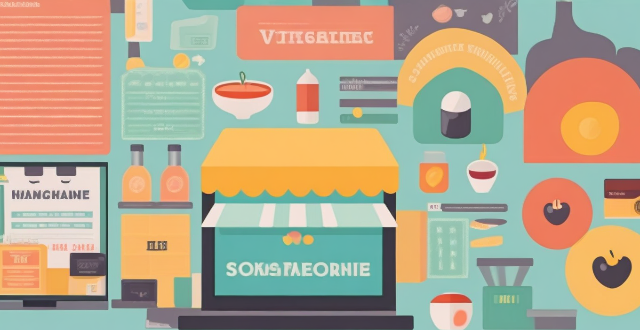A restaurant management system (RMS) is a comprehensive software solution designed to streamline various operations within a restaurant. It integrates functions such as point of sale (POS), inventory management, employee scheduling, customer relationship management (CRM), and reporting. The POS component allows for efficient ordering, payment processing, and receipt printing. Inventory management helps track food and supply levels, while employee scheduling ensures adequate staff coverage. The CRM aspect focuses on building customer loyalty, and reporting tools provide insights into sales, inventory, labor, and marketing analytics. Modern RMS often integrates with other systems like accounting software and online ordering platforms. User access and security measures are implemented to protect sensitive data. Overall, an RMS works by integrating multiple operational aspects of a restaurant into one platform that improves efficiency and decision-making.

How Does a Restaurant Management System Work?
A restaurant management system (RMS) is an integrated software solution designed to streamline various operations within a restaurant. It typically combines several functions, such as point of sale (POS), inventory management, employee scheduling, customer relationship management (CRM), and reporting. Here's how it works:
Point of Sale (POS)
The POS component is the heart of any RMS. It allows for quick and efficient ordering, payment processing, and receipt printing. The POS system can be cloud-based or installed on local devices and often includes features like:
- Order Entry: Staff input orders directly into the system.
- Payment Processing: Integration with payment gateways for card transactions.
- Receipt Printing: Automatic generation and printing of receipts.
Inventory Management
Inventory management helps track food and supply levels to ensure that the restaurant always has the necessary ingredients and materials. Key features include:
- Stock Tracking: Monitoring of current stock levels.
- Automated Reordering: Alerts when items are low and need restocking.
- Vendor Management: Keeping records of suppliers and purchase history.
Employee Scheduling
This feature helps manage staff schedules, ensuring adequate coverage during peak times and reducing labor costs during slow periods. It may include:
- Shift Planning: Assigning shifts to employees based on availability and business needs.
- Time Clock: Digital time clock for accurate time tracking.
- Labor Cost Tracking: Monitoring labor costs against sales.
Customer Relationship Management (CRM)
The CRM aspect of an RMS focuses on building customer loyalty and improving the dining experience. It often involves:
- Customer Data Collection: Storing information about customer preferences and behaviors.
- Loyalty Programs: Encouraging return visits through rewards and discounts.
- Feedback Mechanisms: Gathering customer feedback for service improvement.
Reporting and Analytics
Reporting tools provide valuable insights into various aspects of the business, allowing owners to make informed decisions. These reports might cover:
- Sales Reports: Daily, weekly, and monthly sales figures.
- Inventory Reports: Analysis of ingredient usage and waste.
- Labor Reports: Evaluation of staff performance and labor costs.
- Marketing Analytics: Measuring the effectiveness of promotional activities.
Integration with Other Systems
Modern RMS often integrates with other systems to enhance efficiency and functionality:
- Accounting Software: Seamless transfer of financial data for accounting purposes.
- Online Ordering Platforms: Integrating online orders directly into the POS.
- Third-Party Delivery Services: Connecting with services like Uber Eats or Grubhub.
- Kitchen Display Systems (KDS): Sending orders directly to the kitchen display.
User Access and Security
Different user roles can be set up within the system to control access levels:
- Administrators: Full access to all functionalities and settings.
- Managers: Access to most features, but limited in changing certain settings.
- Staff Members: Limited to their specific tasks, like taking orders or clocking in/out.
Security measures are implemented to protect sensitive data:
- Data Encryption: Ensuring that data transmitted between devices is secure.
- Backup and Recovery: Regular backups to prevent data loss and facilitate recovery if needed.
In summary, a restaurant management system works by integrating multiple operational aspects of a restaurant into one cohesive software platform that streamlines processes, improves efficiency, and provides valuable analytics for better decision-making.